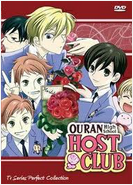It's a bit of a cliche that librarians are
cat people, but it's definitely true that
cats and libraries are a great combination. So whether you're a cat fanatic or just someone who thinks they're cute, we've put together a list of nine books that we think are purrfect!
You Need More Sleep: Advice from Cats by Francesco Marciuliano
(818.602 MAR) Our feline friends have spent eons observing, napping, pondering, napping, and taking notes about the human condition. In between naps, they've realized that we humans could use some catlike guidance when it comes to handling the ups and downs of life. In this book they've condescended to share their invaluable wisdom in short advice columns.
(818.602 CAT) Fifteen writers, all addressing not just our fascination with cat videos, but also how we decide what is good or bad art, or art at all; how taste develops, how it can change, and why we love or hate something. It's about people and technology and just what it is about cats that makes them the internet's cutest despots.
(133.5 CON) Brand-new cat owners, or those who have lived with a feline companion or two for years, need only look to the stars to demystify cat behaviors. This zodiac collection delves into the inner lives of cats, exploring each sun sign and offering character traits, lifestyle insights, and relationship inclinations to help cat owners learn to live in harmony with their unique pets.
Junji Ito's Cat Diary: Yon & Mu by Junji Ito
(MANGA Ito) Master of Japanese horror manga Junji Ito presents a series of hissterical tales chronicling his own real-life trials and tribulations in becoming a cat owner. Junji Ito has recently built a new house and has invited his fiancée, A-ko, to live with him. Little did he know ... his blushing bride-to-be has some unexpected company in tow: Yon, a ghastly-looking family cat, and Mu, an adorable Norwegian forest cat.
Cats Galore: A Compendium of Cultured Cats by Susan Herbert
(759.2 HER) Susan Herbert's delightful feline reimaginings of famous scenes from art, theater, opera and film have won her a devoted following. This unprecedented new compilation of her paintings provides an irresistible introduction to her world of cats, featuring previously unpublished images as well as a wide selection of her best-loved pieces.
Tiny Hats on Cats: Because Every Cat Deserves to Feel Fancy by Adam Ellis
(745.54 ELL) A fun and creative book for cat lovers, crafters, and pop-culture devotees alike. Readers will learn how to craft colorful and creative feline headgear from the book's step-by-step instructions. And in case you can't get enough feline haberdashery, you should also check out
Cats in Hats: 30 Knit and Crochet Patterns for Your Kitty by Sara Thomas.
Shake Cats by Carli Davidson
(636.8 DAV) The fur flies in this irresistible third installment in the bestselling Shake series by popular pet photographer Carli Davidson, featuring adorable and hysterical color photographs of more than sixty cats caught mid-shake.
Catify to Satisfy: Simple Design Solutions for Creating a Feline-Friendly Home by Jackson Galaxy & Kate Benjamin
(636.8 GAL) In this book, Jackson Galaxy and Kate Benjamin show cat guardians everywhere how to use home design tricks to address everyday cat care issues. Featuring the amazing projects cat guardians from around the world have shared with Jackson and Kate -- design strategies for solving even the most daunting kitty challenges -- this book is the ultimate guide to creating a happy home for cat guardian and cat alike.
Simon's Cat: Off to the Vet by Simon Tofield
(741.5 TOF) In this brand new book we see Simon’s Cat face any feline’s most dreaded scenario – he’s off to the vet. And he’s not at all happy about it.


























